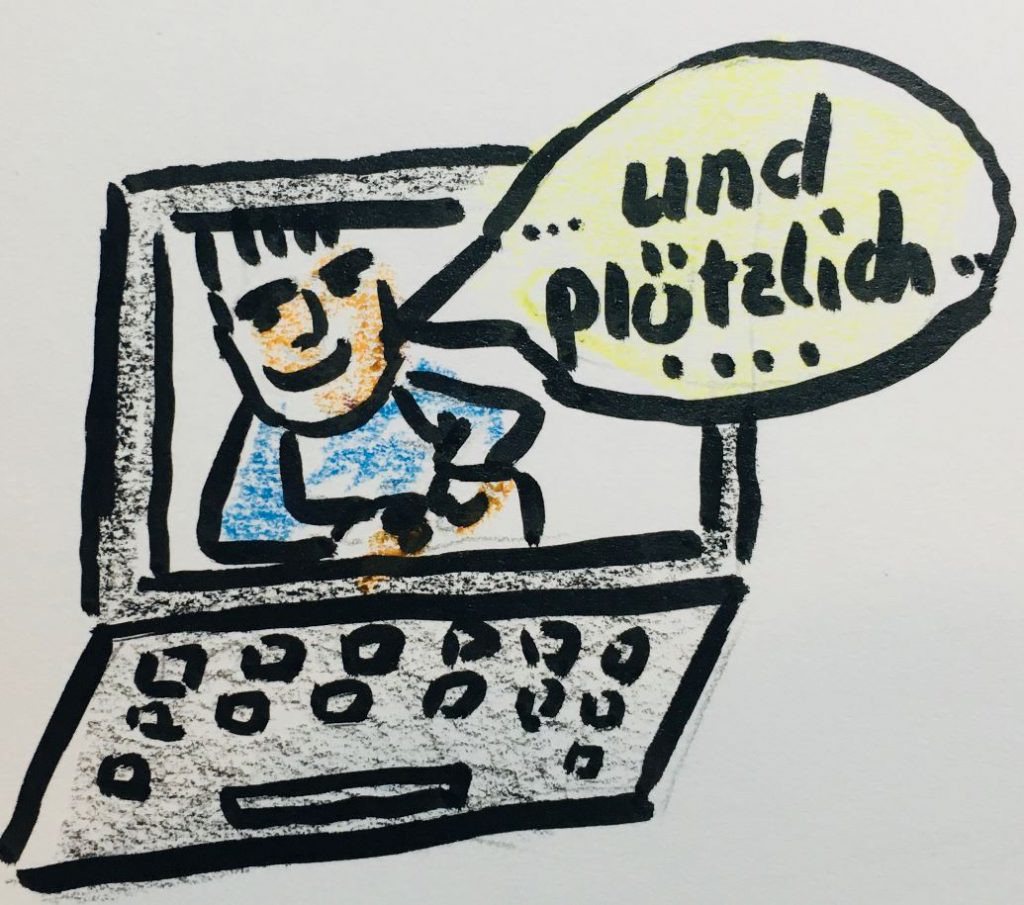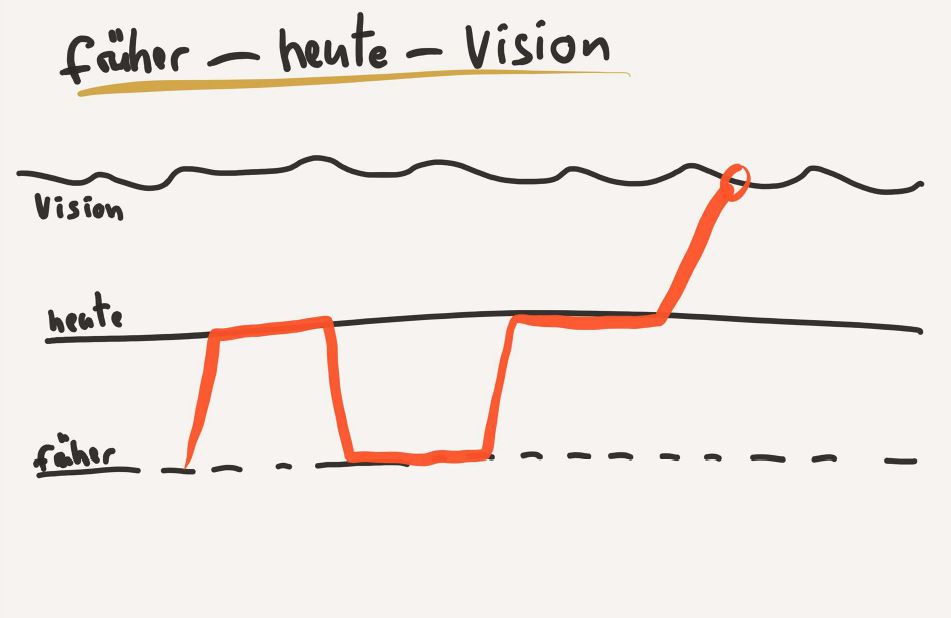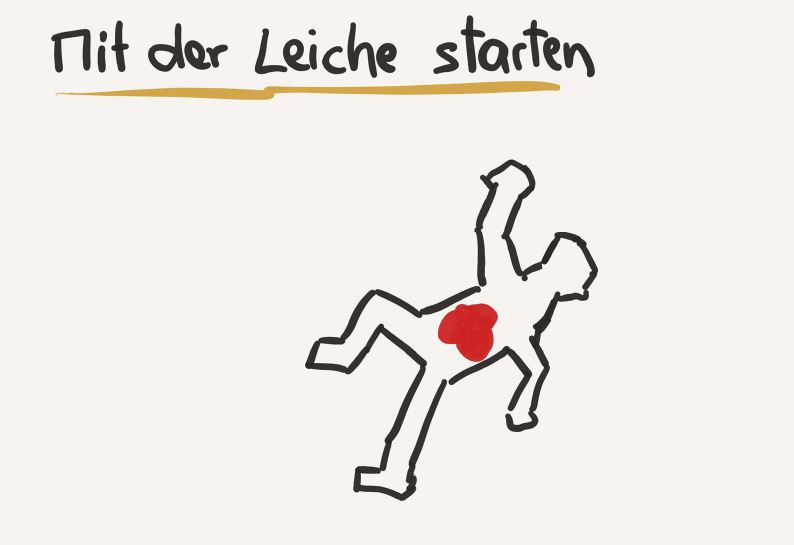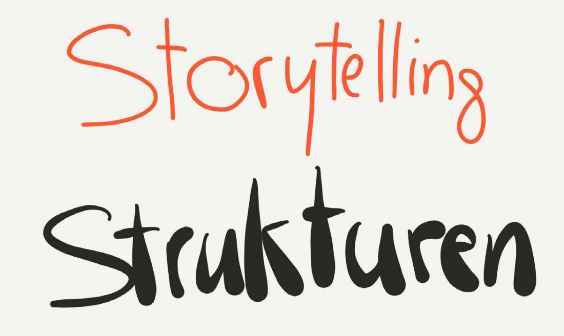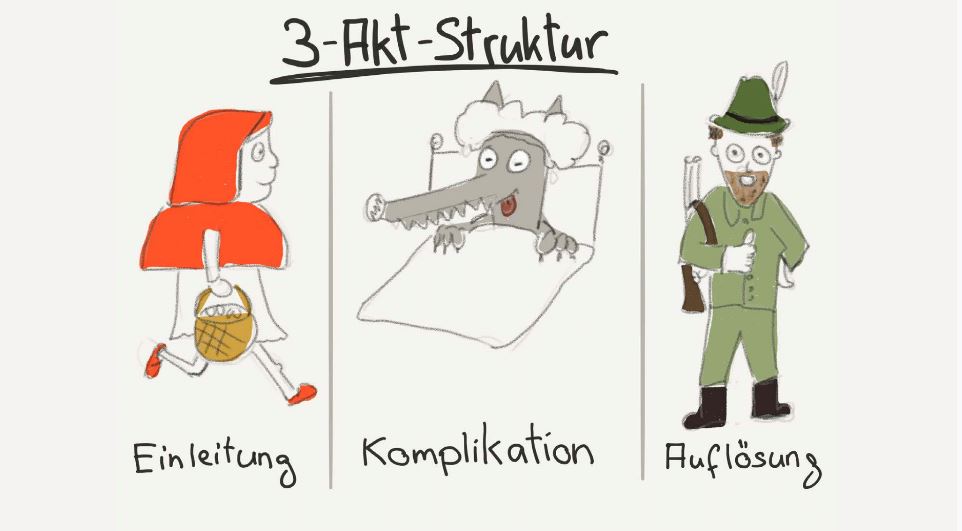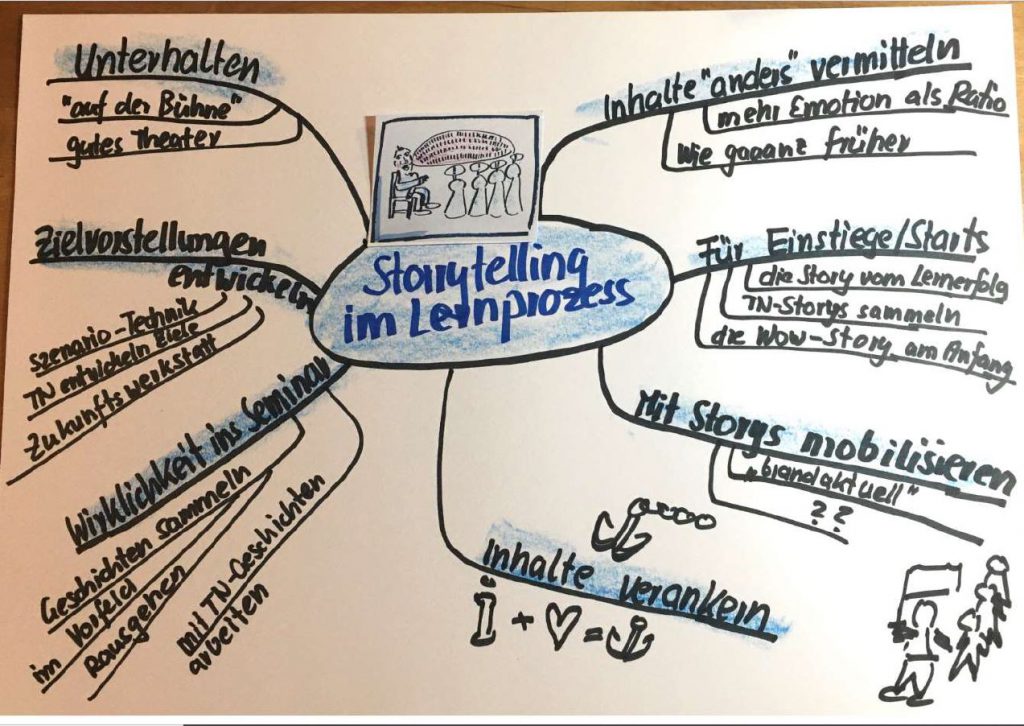Stories and examples for lecture, training and seminar
On 14 October 2020, the seminar „Storytelling in trade union education work“ took place for the second time. This time online and therefore also shortened in time. The big question for the trainers Michael Ziereis and Ulli Lipp: Storytelling, is it also possible online? How much is lost when we hear the narrators through the speaker and see them as a section of a picture?
First stories
Getting to know each other at the beginning of the seminar already showed that storytelling also works online. Trainers and participants had prepared objects with which they briefly introduced themselves. This resulted in ten mini-stories in which many elements of storytelling were already used – quite automatically and without being prompted. It was important to see and hear the storytellers in front of the screen: preferably live in full screen and with good sound quality without feedback, delay and noise.
Of course, it’s different when the narrator stands in front of us, when the tension rises, when you hear a pin drop and you can read the concern of the other participants on their faces. In the online mode, we have to accept some sacrifices.
Where our preference and „susceptibility“ for stories originates
Storytelling around the campfire of early man was the oldest form of training and served the „episodic memory“ that stores information like short films. Mixing facts with emotions is what made and still makes this form of knowledge transfer so effective. We learn more easily when emotions are involved. This is known from the psychology of learning. At the same time, learning is always constrained learning. By putting ourselves in the place of the people acting, by showing solidarity, by empathising, we obscure our view. But why is that the case? Where do these feelings come from within us? Why do we develop anger? The blog post „Storytelling taken further“ takes these thoughts further.
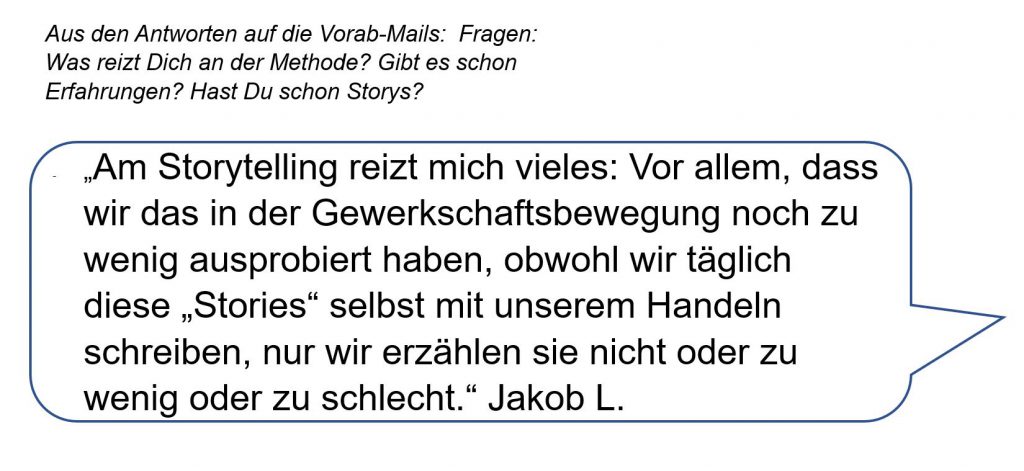
From the responses to the preliminary emails: Questions: What attracts you to the method? Do you already have experience? Do you already have stories?
„There are many things that appeal to me about storytelling: above all, that we have not yet tried it out enough in the trade union movement, even though we write these „stories“ ourselves every day with our actions; it’s just that we don’t tell them, or we tell them too little or too badly.“ Jakob L.
“Spice” for our stories
For stories to be effective, they have to be well told, whether around the campfire or via the computer.
Storytelling professionals have very similar tips:

Structures for storytelling
Good stories follow a structure. We have looked at some of the commonly used structures.
| Earlier – today – vision | Start with the dead body | Storytelling structures |
| 3-act structure Introduction / complication |
Here is the full presentation from the seminar (PDF 819KB) and a link to a page with suggestions for storytelling structures.
Applications of storytelling in the learning process
The mind map shows a very wide field. Some highlights:
Bring reality into the seminar: Participants find it easier if they can bring experiences into the seminar as stories. „I raised my voice with shaking knees…“. In pre-Corona times, we sent participants out into the streets to interview people on the seminar topic (e.g. solidarity). The best contributions came when actual stories were told.
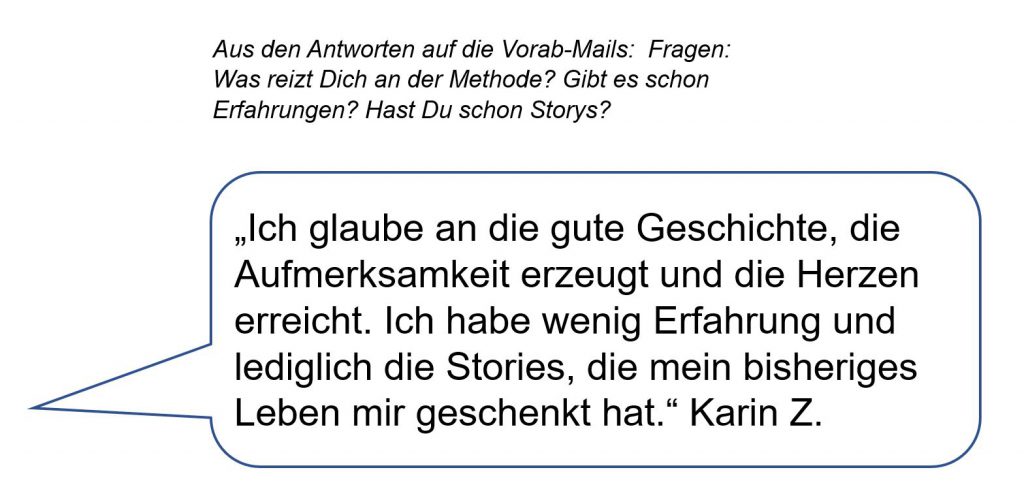
From the responses to the preliminary emails: Questions: What attracts you to the method? Do you already have experience? Do you already have stories?
„I believe in a good story that generates attention and reaches hearts. I have little experience and only the stories that my past life has given me.“ Karin Z.
Developing goals as stories: Complementary to quite rationally developed and rather abstractly formulated goals of change processes, we can come up with stories: „The morning after …“. Robert Jungk quite deliberately had scenarios developed as stories in his „Future Workshop„: „Think: What would it be like if it were beautiful!“ These scenarios should be as specific as possible in order to consider in a next step: What do we have to do to make this goal real.
Mobilise with stories: This is what makes stories valuable: they shake us up. They touch us. They also make us act! We only need to listen to the story of Günther the pavement worker told by Willi Mernyi to feel the mobilising power of storytelling.
Another good example is the story by Helmut Russ:
A critical look at storytelling
With a little distance, however, we also recognise the „dark side“ of storytelling. It is not only used to mobilise for the just cause of trade unions, but also by racists and rabble-rousers. The strong emotional impact of good stories makes it difficult to take a detached and critical view of the content.
Additional material and links
Two storytelling links in this blog
- The documentation of the last seminar in 2019 in the face-to-face version
- Further ideas for application
Videos about storytelling from an entrepreneur’s point of view
Recommended links from seminar participants
- On the objective of „building counter-power„, for which storytelling can be used.
- From a feminist perspective, an example by Congresswoman Alexandria Ocasio-Cortez
Authors: Michael Ziereis and Ulli Lipp
Lust auf mehr? Zu allen Einträgen der Serie #mm kommst du HIER!

Dieses Werk ist lizenziert unter einer Creative Commons Namensnennung-NichtKommerziell-Weitergabe unter gleichen Bedingungen unter gleichen Bedingungen 3.0 Österreich Lizenz.
Volltext der Lizenz

